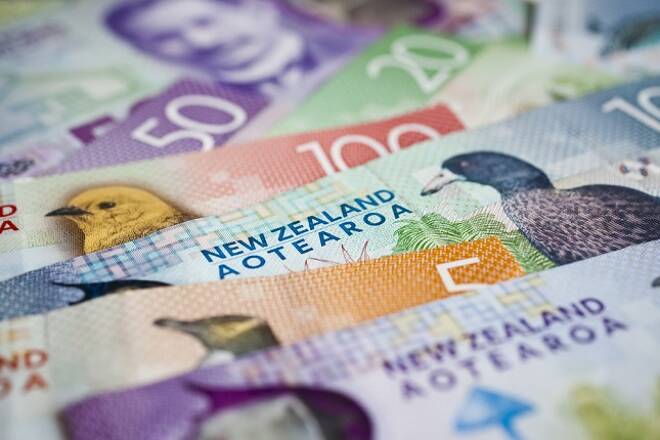Advertisement
Advertisement
AUD/USD and NZD/USD Fundamental Daily Forecast – Pro-Risk Aussie, Kiwi Should Benefit from Accommodative Fed
By:
The Aussie and Kiwi soared on Friday as the U.S. Federal Reserve’s new policy framework suggested that interest rates would remain low.
The Australian and New Zealand Dollars are trading mixed early Monday after confirming last week’s strong surge with a slight follow-through to the upside shortly after the opening.
Earlier in the session, the Aussie touched a 21-month peak of .7381 before retreating slightly and the Kiwi was sitting just below a post-COVID high of .6752 that it posted on shortly after the opening.
At 03:17 GMT, the AUD/USD is trading .7369, up 0.0004 or +0.05% and the NZD/USD is at .6740, up 0.0001 or +0.02%.
The U.S. Dollar remains under the same early-session pressure that triggered a steep rise by the Australian and New Zealand Dollars on Friday. Investors are saying that a speech last Thursday in which Federal Reserve Chair Jerome Powell outlined an accommodative shift in the central bank’s approach to inflation is weighing on the greenback as investors interpreted it as meaning rates would stay lower for longer.
Friday Recap
The Aussie and Kiwi soared on Friday as the U.S. Federal Reserve’s new policy framework suggested that interest rates would remain low.
After several days of consolidation, the greenback resumed its slide against the Australian and New Zealand Dollars in the wake of Fed Chair Jerome Powell’s remarks at the virtual Jackson Hole conference. Powell said the U.S. central bank would seek to keep inflation at 2%, on average, so that periods of too-low inflation would likely be followed by an effort to lift inflation above 2% for some time.
In practice, market participants expect that this means the current ultra-low rates will stay lower for longer, thereby pressuring the U.S. Dollar.
Short-Term Outlook
Since Powell made the announcement, U.S. short-term yields have been trading weaker than the long-term yields (actually 30-year Bond yields rose), leading to a steepening of the yield curve. This could be enough to make the U.S. Dollar a less-attractive asset.
The price action is accommodative, which tends to support higher risk assets like stocks. I mean where else are investors going to get a return if yields continue to hover around zer The Kiwi and the Aussie are pro-risk. This attracted enough buyers to drive the New Zealand Dollar to its highest level against the U.S. Dollar since January while the Australian Dollar rose to its highest level since December 2018.
A steeper yield curve can point to better economic times ahead as bolstered expectations for growth and inflation can weigh on the value of long-term government bonds, pushing their yields higher than short-term peers, which are more attuned to shifts in monetary policy.
Meanwhile, there are some who believe a widening of the spread between short-term and long-term yields could be a sign of a recession.
Over the near-term, we expect the AUD/USD and NZD/USD to be highly sensitive to the movement in the U.S. yield curve.
About the Author
James Hyerczykauthor
James Hyerczyk is a U.S. based seasoned technical analyst and educator with over 40 years of experience in market analysis and trading, specializing in chart patterns and price movement. He is the author of two books on technical analysis and has a background in both futures and stock markets.
Advertisement
